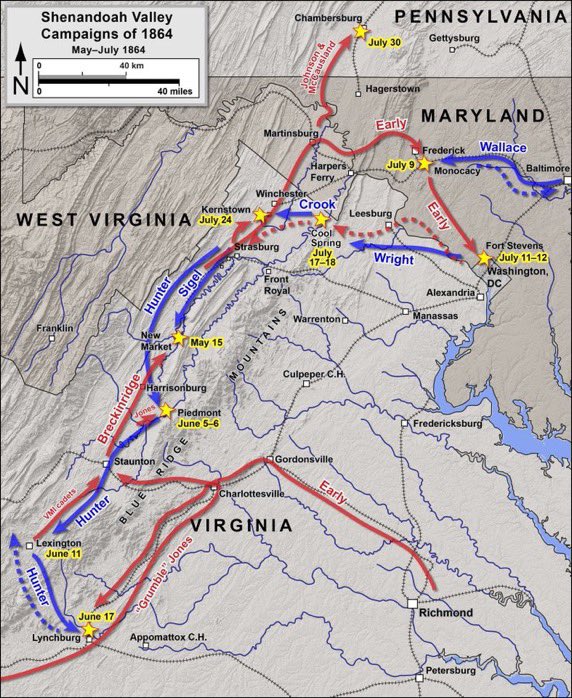John Cabell Breckinridge, the 14th Vice President of the United States, who later commanded troops for the confederacy during the #CivilWar, died #OTD in 1875.🧵 

Born into a prominent family in Lexington, KY, in 1821, Breckinridge received a law degree from @Transy University in 1841 and opened a law practice. He left that practice in 1847, and was commissioned as a Major in the 3rd Kentucky Infantry for service in the war with Mexico. 



The unit saw no combat, but was part of the occupation force for 6 months. Upon returning to Kentucky and leaving the Army, Breckinridge entered politics, being elected to the Kentucky House of Representatives in 1849. 

During this time, he visited with his cousin, Mary Todd, and met her husband, Abraham Lincoln. Though they disagreed politically, the two men became friends. After two years, Breckinridge was elected to the US House of Representatives from Kentucky’s 8th District. 



He served two terms before being tapped as the candidate for Vice President on the Democratic Party ticket for the presidential election of 1856. When James Buchanan won that election, Breckinridge, at only 36 years old, became the youngest Vice President in US history. 





Four years later, his term expired and having already been chosen by the Kentucky Legislature for a seat in the US Senate, Breckinridge became the nominee for President by the breakaway Southern Democrat Party for the presidential election of 1860. 



In the fractious, four-way election, Breckinridge finished third in the popular vote, but second in the Electoral College after winning 11 southern states. His cousin’s husband, Abraham Lincoln, won the election, prompting most southern states to secede. 

Breckinridge assumed his Senate seat since Kentucky remained in the Union, but he retained confederate sympathies and ultimately resigned to join the confederate army. He was officially declared a traitor by the Senate and expelled. 

He was given command of a brigade, which became known as The Orphan Brigade, and served with distinction at the Battle of @ShilohNPS. Promoted to command a division, he saw action at @StonesRiverNPS, where a third of his division became casualties after a futile charge. 





Furious with Braxton Bragg, who had ordered the attack, he nonetheless commanded a division under Bragg at @ChickamaugaNPS and was then given command of a corps during the Chattanooga Campaign. 



There the bad blood between the men boiled over. After the defeat at Missionary Ridge, Bragg charged Breckinridge with drunkenness and relieved him. It was viewed as a false charge and didn’t stop Breckinridge from being given command of a small force in the Shenandoah Valley. 



He drew comparisons to Thomas Jackson after victories at the Battles of New Market and Second Kernstown, and was then sent east with his division to join Robert E. Lee’s army outside Richmond. He commanded them at the Battle of Cold Harbor, where he was wounded. 





He returned to hold several smaller independent commands before becoming the confederate Secretary of War. In that role, he helped negotiate the surrender of Joseph Johnston’s army to Gen. William T. Sherman before commandeering a boat and fleeing the country, ending up in Paris. 







He remained abroad for over three years, returning only after an amnesty was declared for all former confederates. Settling back in Kentucky, he began practicing law again and also worked in the insurance and railroad industries. 

Breckinridge refused several offers to return to politics. Suffering from cirrhosis due to liver injuries during the war, he passed away in his hometown of Lexington when he was only 54, and was buried in Lexington Cemetery. 

• • •
Missing some Tweet in this thread? You can try to
force a refresh

 Read on Twitter
Read on Twitter






































